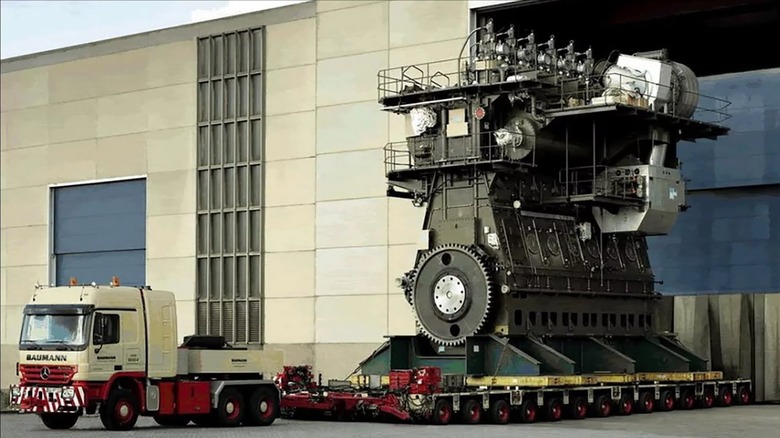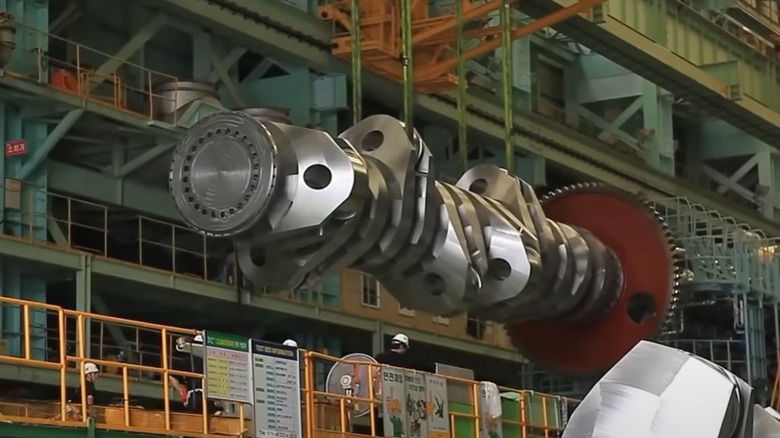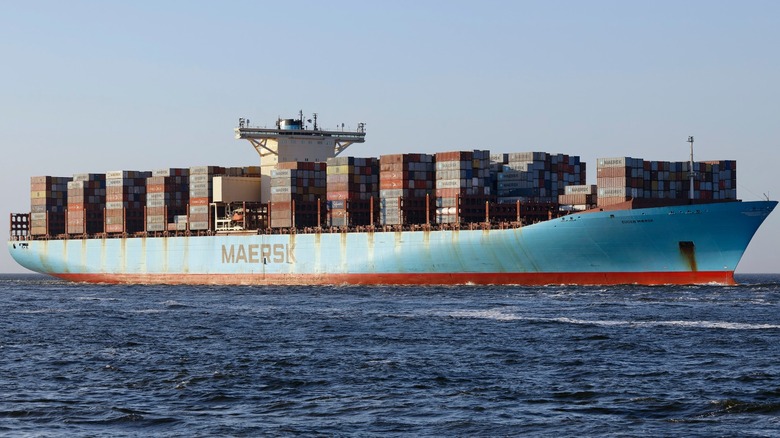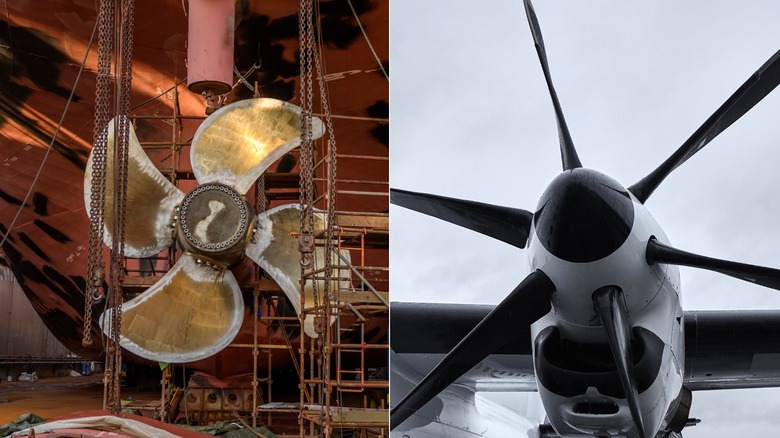How Big Is The World's Largest Piston Engine? And How Much Power Can It Deliver?
When we think of the largest piston engines, we often think of European exotics or hypercars, like the Bugatti Veyron Super Sport with its incredible eight-liter quad-turbo W16 engine that outputs 1,200 hp. But did you know that automotive engines are puny compared to the other vehicles that move our world?
Yes, the biggest engine you can find in a sports car is nothing compared to the largest piston engine ever made. This giant engine first entered service in 2006, meaning it launched one year after the legendary Veyron. But if that's the case, how come it's not known among car enthusiasts? That's because you won't find this massive engine under the hood of a sports car — instead, you'll find it inside the belly of a massive cargo ship.
The Wärtsilä 14RT-flex96C is the largest piston engine in the world (so far). This huge diesel power unit will blow the Bugatti's horsepower right out of the water, and it will literally crush the W16 engine if you put it under the 14RT. So, let's check out the size of this marine engine and see how much power it can deliver.
Taller than a four-story building
The Wärtsilä 14RT-flex96C is a 14-cylinder turbodiesel engine that measures about 27.3 meters or nearly 90 feet long — this length is about the equivalent of six mid-size SUVs. It's also about 13.5 meters or over 44 feet tall, which is taller than a four-floor apartment.
The engine has a total dry weight of 2,300 tons, meaning that number doesn't include any necessary fluids like lubricating oils and diesel fuel. Each of its parts are also massive — the crankshaft weighs 300 tons while each individual piston comes in at five tons. This puts just the reciprocating parts already at 370 tons. With the average mid-size SUV coming in at 2.3 tons, this single engine weighs about 100 family cars.
These impressive numbers make the Wärtsilä 14RT-flex96C the biggest piston engine in the world. Even so, the 14RT deserves all the accolades it gets because it can deliver the power its size warrants.
108,000 hp of pure energy
Each cylinder of the Wärtsilä 14RT-flex96C displaces 1,820 liters, giving the 14-cylinder turbodiesel a total displacement of 25,480 liters. Given that the dimensions of the W16 engine in the Veyron occupy 10,733 liters, you could fit more than two fully disassembled Bugatti engines in just the cylinders of the 14RT.
Each cylinder on the Wärtsilä 14RT-flex96C can push out 7,780 hp, with all 14 cylinders working together, you get a total of 108,920 hp from the marine turbodiesel engine. But what's more impressive is that, unlike most car engines, it doesn't need to hit thousands of revolutions per minute to deliver that power. Instead, it hits peak power at just 102 rpm, which helps it achieve it excellent efficiency.
Aside from its low rpm, the 14RT-flex9C can also achieve a remarkable 50% thermal efficiency. Most car engines can only hit 25 to 30%, so this giant marine diesel engine can extract 100% more power from each liter of fuel it consumes. Speaking of fuel consumption, the Veyron gets 29 liters per 100 km or a little over 8 mpg when driving in the city. But if you push the Bugatti to its limit, it will use up to five liters per minute.
However, this is nothing compared to the 14RT. That's because this massive engine has a voracious fuel consumption: it uses up 6,400 liters per hour, or almost 107 liters per minute at its most efficient power setting. That's over 21 times more fuel volume than the Bugatti at its maximum output.
Given that, how can we say that the Wärtsilä 14RT-flex96C is fuel efficient? That's because you should see how much weight it can carry (versus the capacity of the Bugatti Veyron).
Which vehicles use the massive Wärtsilä engine and how big are they?
The first Wärtsilä 14RT-flex96C was installed on the Emma Maersk, which was the largest container ship when it went into service in 2006. Although it has since been eclipsed by larger vessels, which pushed it out of our list of the biggest ships that world has ever seen, she's still a sight to behold.
The Emma Maersk can carry 11,000 twenty-foot-equivalent units (TEU) containers. With each TEU having a maximum weight of 25,000 kg, that means the Emma Maersk can carry over 303,000 tons in cargo. Since the ship itself weighs over 170,000 tons, that means that 14RT can push over 473,000 tons of weight. With each Veyron weighing a little over 2.4 tons, the Wärtsilä 14RT-flex96C can carry more than 197,000 Bugatti Veyrons in one trip.
Only 25 of these 14RT engines have been made as of April 2023, but 86 more are on order, leading to a total number of 111 giant engines. You'll most find these engines on large container ships like the Emma Maersk and her sisters, as it's been designed exactly for that application.
How big is the Wärtsilä 14RT-flex96C compared to other engines?
While the Wärtsilä 14RT-flex96C is indeed the world's largest piston engine, there are also other contenders for that award on road, land, air, and space. The five biggest engines in the world are all massive in their own right, but they still cannot beat the 14RT in terms of sheer weight and volume.
Furthermore, although models like the Rocketdyne F-1 used with the Saturn V rocket and the record-breaking GE9X planned for the Boeing 777X are powerful engines with better power-to-weight ratios than the marine diesel, they're not as fuel efficient when you're moving tons and tons of cargo. That's why, despite the advancement of aviation and space technologies today, cargo ships still rule the seas and move our world today.
You should also note that the Wärtsilä 14RT-flex96C is based on the 12-cylinder engine with the same RT-flex96C design. This means you will find slightly smaller variants of the 14-cylinder engine with less power and size but are still definitely larger than some of the other engines designed for use on other terrain and environments.



